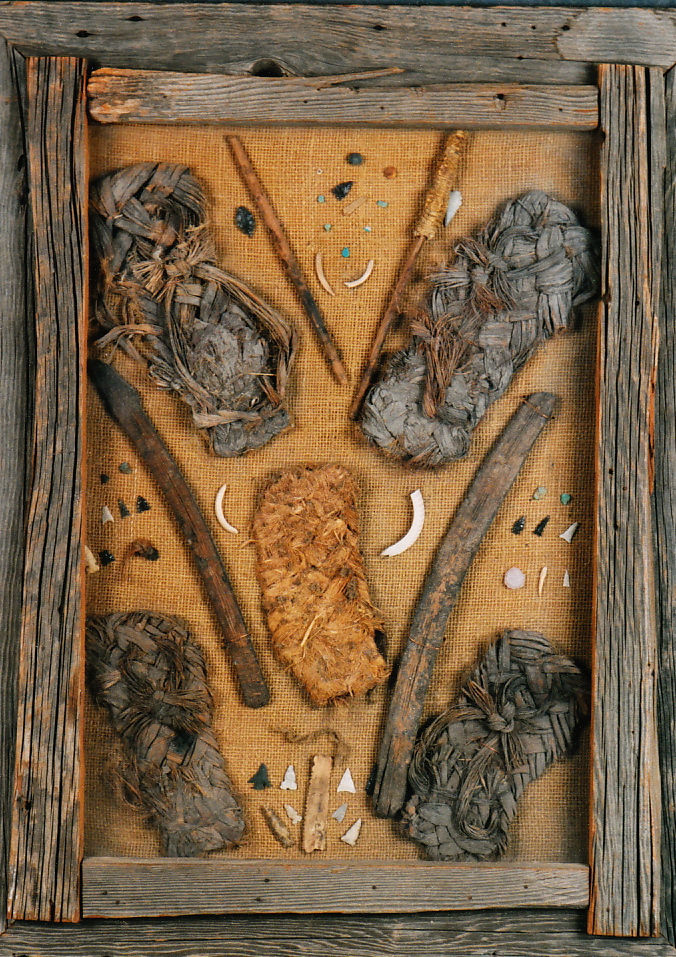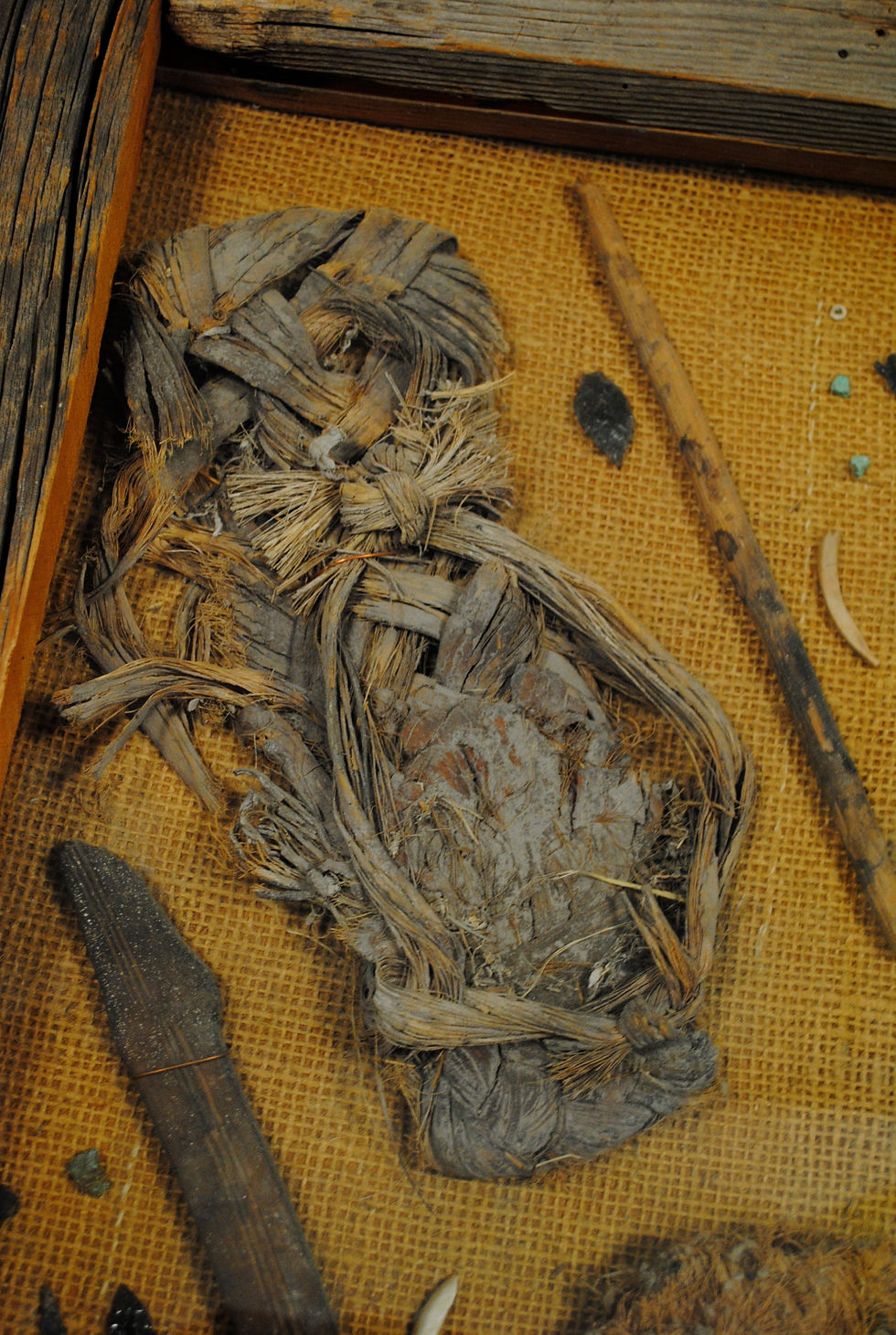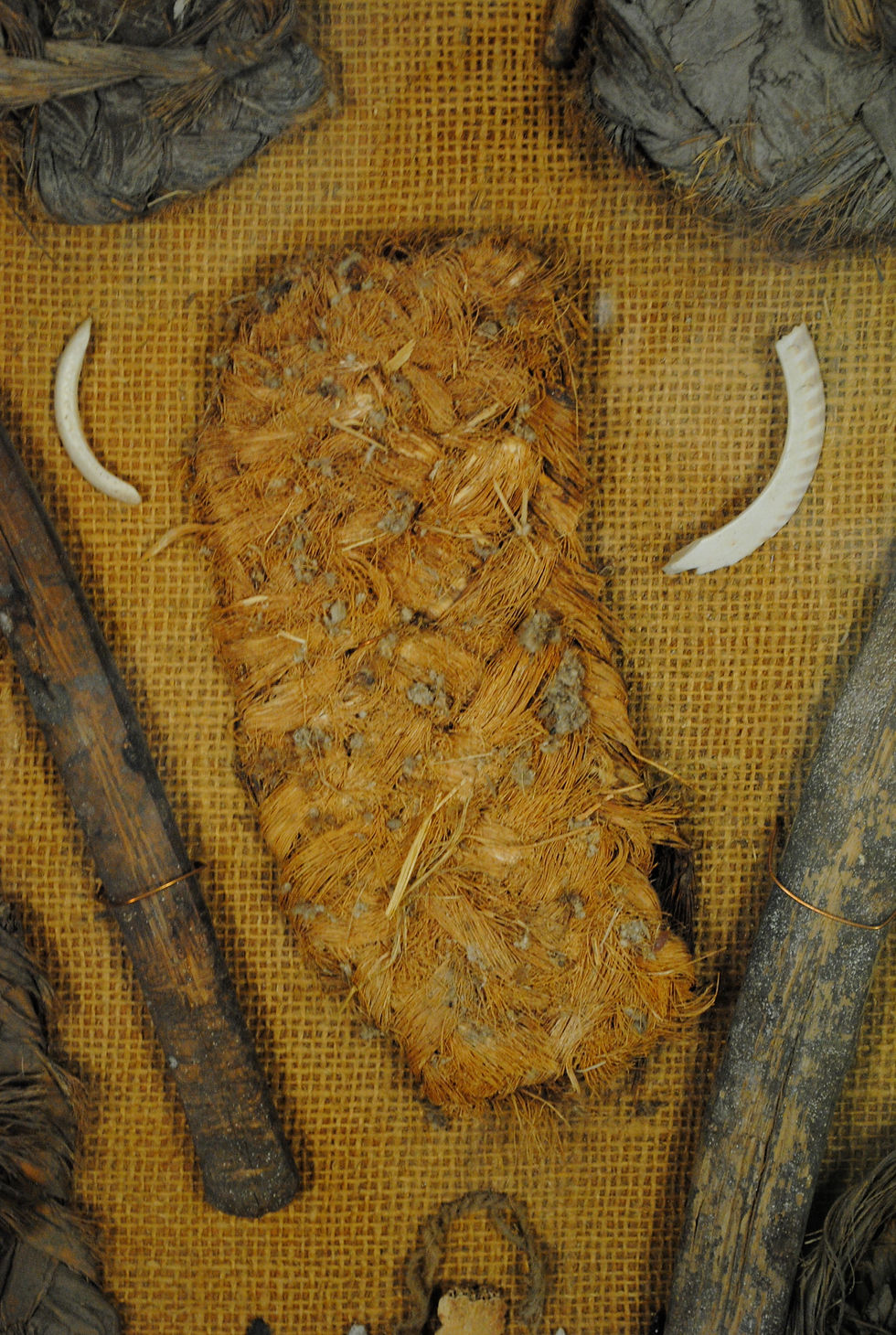The Jim and Vanita Oelschlager
Native American Ethnographic Collection

Anasazi Sandal Set, ca. 1150 CE Anasazi. New Mexico. Yucca Leaves. 33” x 25.5” x 1.5”

Anasazi Sandal Set, ca. 1150 CE Anasazi. New Mexico. Yucca Leaves. 33” x 25.5” x 1.5”

Anasazi Sandal Set, ca. 1150 CE Anasazi. New Mexico. Yucca Leaves. 33” x 25.5” x 1.5”

Anasazi Sandal Set, ca. 1150 CE Anasazi. New Mexico. Yucca Leaves. 33” x 25.5” x 1.5”

Anasazi Sandal Set, ca. 1150 CE Anasazi. New Mexico. Yucca Leaves. 33” x 25.5” x 1.5”

Anasazi Sandal Set, ca. 1150 CE Anasazi. New Mexico. Yucca Leaves. 33” x 25.5” x 1.5”
Mummy Cave is located along the North Fork of the Shoshone River in Wyoming, just east of Yellowstone National Park. The cave was occupied for nine thousand years, from 7280 BCE to 1580 CE.
When the site was excavated by the Buffalo Bill Historical Center, from 1963 to 1965, archaeologists found an unusually high level of preservation of organic materials in the cave.
Early cultural layers revealed long stone blades and leaf-shaped projectile points. The name of the cave comes from the mummified remains of a high-status male wearing sheepskin clothing decorated with fur and feathers. The mummy has been dated to 770 CE using radiocarbon dating.
Later cultural deposits show the presence of early Northern Plains cultures through artifacts such as cordage, basketwork, and gray flat-bottomed pottery.
The hide- covered sandals shown here are probably from the same region as the Mummy Cave, as is the small piece of woven fabric.
Woven sandals of various types were widely used by American Indians from the Plateau and Great Basin regions as well as throughout the Southwest. Prehistoric cultures, such as the Anasazi, were talented weavers and basket makers. They made and wore sandals similar to those featured in this exhibit.
The style is a plaited, or braided, weave that was developed in the late Pueblo II and early Pueblo III period, around 900 to 1300 CE. Weavers used yucca leaves or similar plant fibers to make the sandals. The second set of sandals is unique in that they are a combination of woven fiber sandal and deer hide moccasin. This technology was probably used by cultures living in the northern Great Basin region, such as in the Mummy Cave area.